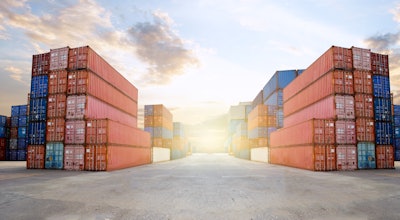
The oversupply of containers is contributing to second-hand container market prices plummeting, according to analysis from Container xChange.
“The current situation of oversupply of containers is a result of a series of reactionary market disruptions that began soon after the outbreak of the pandemic in early 2020. With the rise in demand, congestion at ports increased and the container capacity was held up for a considerably long period of time. This led to the panic ordering of new boxes at record levels. With time, as markets reopen and demand softens, the oversupply is a natural outcome of demand-supply forces balancing at new levels,” says Christian Roeloffs, co-founder and CEO of Container xChange. “The oversupply situation does not come as a surprise because the average container prices and leasing rates have been declining globally since Sept-Oct 2021.”
From Container xChange:
- Freight rates have come down by approximately an average of 20% since the beginning of the year and will continue to slide gradually, but there will not be a massive decrease because the underlying disruptions in the supply chain are still there. Inflation, for one, has started to build stress on the U.S. economy and the EU.
- With inflation and pandemic-induced lockdowns, disruptions will continue to change the equation between supply, demand and prices. In the longer term, these will phase out and create a new normal balance of supply and demand.
- Data published by Drewry indicates an excess of 6 million TUEs of capacity in the global fleet of containers. Container xChange analysis further states that the oversupply will lead to the requirement of more depot space, which is already scarce.
- U.S. imports decreased by 2.4% between March and April. Purchases of goods went down $1 billion as higher imports of industrial supplies and materials (up 1.8 billion) were offset by lower imports of consumer goods (down 1.5 billion).
- In the long run, ocean freight demand is forecasted as a multiplier of global GDP growth. And if global GDP doesn't plummet by for instance 5%, the global demand for shipping capacity will not significantly plummet.
“This situation will lead to tighter depot space, carriers will rush to get rid of their older equipment, second-hand container prices will continue to slide gradually only to reach a new normal level and the new market will dry up,” Roeloffs.




















